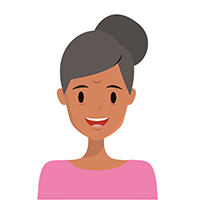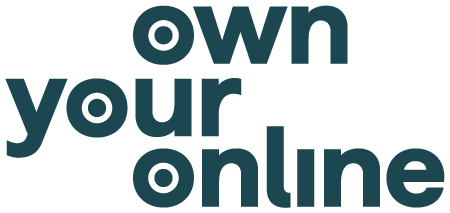
Get to know your customers
Knowing your customers is critical to business survival.
Surveys, conversations and statistics can help you get to know your customers. Knowing your customers helps you to create products and services that sell, and effectively promote them to the right people.
Define your ideal customers
To build up a picture of your ideal customer, start by learning about your actual customers.
Learn about your existing customers
If you’re already running a business, you might already know quite a bit about your customers. Now’s the time to learn more, for example, by chatting with them in store or arranging in-depth interviews.
As a small business, you’ll often have direct contact with customers, which is a good start. You can learn a lot from informal interactions.
For example, you might hear what regular customers worry about and spot any trends early. But properly planned research is the best way to build your insights – especially if your business involves little or no face-to-face customer contact.
Surveys
Surveys are one way to find out about current and future customers. You can ask a wide range of questions, for example:
- what they want
- how they learned about your business
- what they liked about you
- what other businesses, products or services they consider alongside yours.
Start by deciding who you’d want to participate in your survey. For example, you might research existing customers or potential customers, and focus on a particular age range, location, or set of interests. Think about how you can:
- reach survey participants, for example, contact details for current customers or social media adverts
- encourage people to complete your survey
- make sure they represent the whole group you want to hear from.
Some businesses carry out short surveys at the point of sale. This data can help identify best-selling items, so you can improve the customer experience of that product. Or it might show what people look for in the market, helping you make better decisions on product selection or stock levels.
You can ask questions face to face at the sales desk if that’s appropriate. If your customers buy online, build questions into the buying process, for example, a post-purchase feedback form. Keep it brief, so you don’t take up a lot of your customer’s time.
Observations
Beyond asking questions, observing customers can tell you even more about how they behave.
You can learn about their lifestyles and buying patterns, about cultural trends, and factors that affect buying behaviour. Examples include asking how your product fits their daily routine, or checking if people use your product differently from how you intended.
Try showing customers a new product or idea and see how they react.
Whichever method you use, make sure people understand what information you’re collecting and how you will use it.
Another option is to observe customers in different settings.
- At places where they shop, such as in supermarkets where you could offer free tastings to observe reactions and ask questions.
- In a group of friends, interviewing them informally and observing what they say and do.
- Online, for example, asking people to complete tasks or record their opinions or behaviour over time.
- Home visits to observe their daily life and ask questions in a comfortable setting.
Businesses often offer a reward to encourage customers to take part in research. For example, a discount, free product or gift voucher to thank them for their time.
Insights from existing data
Existing data on buying behaviour from trusted sources can tell you a lot about potential customers, where they buy, and market size.
Reports and statistics can also show trends, for example:
- what proportion of people research and buy your type of product online
- what new product features are popular in your market
- which customers value your existing product features the most
- how regulations or economic conditions could affect your customers.
For example, a business offering face-to-face advice to small tech businesses might seek out statistics on:
- how the IT industry is growing
- what proportion of businesses fit the target size
- where to be based to best serve potential customers.
Data for business(external link) — Stats NZ
Consumer reports(external link) — Commerce Commission
Learn about your potential customers
If you’re starting a business or introducing a new product or service, delve into what people want from similar e-commerce businesses.
Read online reviews, check what products people search for, spot when there’s “buzz” around something new.
When setting up a new online store, look at others who have something in common with you. Some online selling platforms offer insights into their customers. You might learn what their customers care about, the basic things every store offers, and what makes a store stands out.
Exporting
If you’re thinking about exporting, you’ll need to identify a market and find out about potential customers there.
Businesses often offer a reward to encourage customers to take part in research.
For example, a discount, free product or gift voucher to thank them for their time.
Creating personas
Personas are fictional profiles of the types of people most likely to buy your products or services. They sum up your ideal customers.
Using personas can help you:
- picture who you want to sell to
- refine your products and services
- engage better with customers
- boost sales.
Once you know more about your different customers, organise them into groups. Think about what each group needs and who to target.
Create a persona to represent each group. For example:
- urban professionals aged 40+
- young families struggling to organise busy lives on a budget.
Create a fictional person who represents that group. For example, focus on the mother of the young family. Let’s call her Ara. Use your insights to decide she works fulltime with unpredictable shifts. Ara also has to organise her kids for school and sports activities, while keeping an eye on the household budget.
Add details
Don’t stop at a basic summary. Fill in the details using insights from surveys, conversations or other customer research.
Find out what people like Ara worry about, what they wish for and how they carry out their day-to-day lives. For example, maybe Ara sticks to her budget and doesn’t spend spontaneously on things that catch her eye online. Or maybe Ara saves up for a treat once a week.
Pictures and catchphrases can be a good way to remind you of each persona. These can help you think about other characteristics when tailoring your offer to what customers need.
Some business owners post personas on a wall to look at when designing products, pricing and promotions, and working on strategy.
Add detail to your personas
 Ara
Ara
- Busy young mum, lives in Christchurch
- “Thrifty and nifty”… tight budget, gets treats once a week
- Buys clothing twice a year, summer and winter.
Values: her local community, tech skills
Motivated to: do tasks quickly, save money
Anxious about: wasting her spare time
Represents 25% of my customers and 15% of my sales.
 Bhavani
Bhavani
- Urban professional, lives in Auckland
- 50+ with assets, spends spontaneously
- Buys clothing every month, both online and in-store.
Values: good ethical production, brand loyalty
Motivated to: be seen as eco-friendly, support New Zealand made
Anxious about: keeping up with trends
Represents 10% of my customers and 50% of sales.
 Joe
Joe
- University student, lives in Taranaki
- Medium budget, spends enthusiastically
- Buys clothing every season, looks for sale items.
Values: hanging out with friends, living life to the fullest
Motivated by: sport, sharing and inspiring others
Anxious about: authenticity to a cause or movement
Represents 25% of my customers and 20% of my sales.
Clarify your ideal customer
To get the best out of your personas, include more detailed information about your ideal customers.
Here are example questions to answer in a persona’s description:
- Where does this person live, or not live?
- How old are they?
- How much spending money do they have?
- Why do they buy from you?
- What languages do they speak?
- What are their favourite websites?
- How often do they buy from you?
- What are their worries when buying?
These are not descriptions of real individuals. You don't need matching characteristics for all your personas. Just use whatever helps you tell them apart.
Make the most of your information sources. Start with what you already know about your customers, for example, from newsletter sign-ups or point-of-sale systems.
If you talk to people to get more insights, make a note of whether they’re loyal, occasional, or someone who no longer buys from you. Information about all three can be useful. Platforms like Google Analytics and Facebook Audience Insights include information about the types of users visiting your website or social media.
Google Analytics(external link) — Google
Facebook Audience Insights(external link) — Facebook
Using your personas regularly helps you get to know them better.
For example, when planning a marketing campaign, think about how best to attract each persona. How might they react to different messages? Deeply knowing your personas helps you think of new ways to engage with, and sell to, customers.
Once you have a great set of detailed personas, keep an eye out for any changes you need to adapt to.
For example, a new product may bring in new customers with different characteristics. Or social media platforms might grow or shrink in popularity among different groups of customers.
What’s next?
Other marketing strategy resources
Content to help you create your marketing strategy

How marketing sets you up for success
From promotions to customer insights, pricing to brand, see how marketing helps your business.

What your customers want and how they think
Customer research helps you run your business well. Use insights to map customer journeys through the buying process.

Build a brand your customers will love
Every business has a brand. Discover how to build yours and use it to attract customers and forge connections.

Use insights to sell the right thing in the best place
When you deeply know your target customers, use these insights to identify what to sell and where best to sell it.

How to set the right price
How high is too high, how low is too low? Plan a pricing strategy that suits your customers and your business.

Find the best way to promote your business
Online or face to face, there are many ways to communicate with customers. Here’s how to choose and plan.




